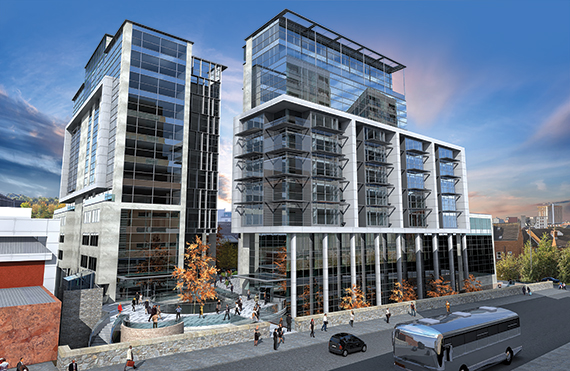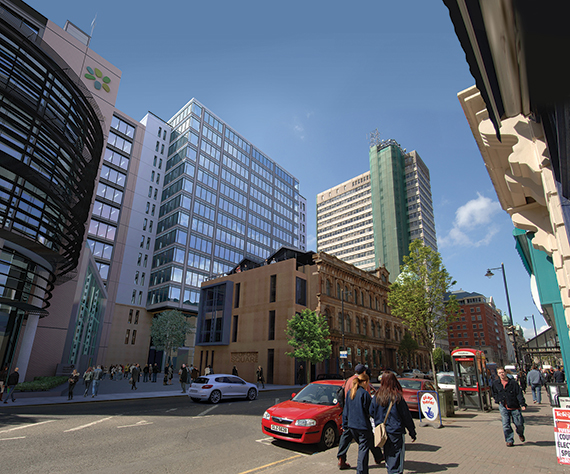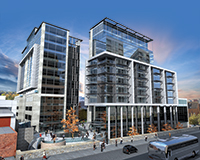
In April 2018, Northern Ireland will slash its corporation tax rate to 12.5%, boosting its competitiveness with the rest of the UK and putting it on a par with the Republic.
Dublin’s low tax policy has made it a magnet for foreign direct investment and, after years in its shadow, Belfast is poised for its own boom. Belfast City Council’s ambition is that by 2020 it will attract £1bn of investment, driven not only by the new tax rate, but a strong talent pool and lower cost base.
The city council’s chief executive, Suzanne Wylie, says: “We’ve already had a lot of success attracting inward investment, particularly from sectors such as finance, tech and legal services. The numbers we attract could grow expeditiously if our tax rate was the same as Dublin’s.”
Government agency Invest NI supported £683m of inward investment in 2014/2015. It has attracted more inward investment per capita than anywhere in the UK, luring the likes of Citigroup, Allstate, Liberty Insurance and Chicago’s CME Group.
According to research by Ulster University, the change to corporation tax could create 33,000 new jobs by 2033. Belfast property agents are predicting a major boost in demand for grade-A offices, particularly given that 75% of inward investors go on to expand.
“You just have to look at Dublin’s office market,” says CBRE’s David Wright. “Take-up in Belfast last year was 300,000 sq ft compared to 2.7m sq ft in Dublin.”
Once the tax change allows Belfast to compete on a level playing field, its rental differential could see the city steal a march on many of its competitors. Dublin’s headline office rents for instance are now around £44 per sq ft, around 150% higher than those in Belfast.
Yet despite the prospects of soaring demand, there is only around 150,000 sq ft of grade-A space available in Belfast – and that is still fragmented. Worse, apart from Belfast Harbour’s 96,000 sq ft City Quays 2, due to complete early in 2017, there is no grade-A office development under construction.
Agents estimate there is up to 600,000-700,000 sq ft of demand already in the market from the likes of HMRC and Deloitte, plus a long-standing 100,000 sq ft requirement for the BBC. Yet incredibly there is only one grade-A building available over 50,000 sq ft, the 162,000 sq ft Soloist at 1 Lanyon Place.
According to CBRE, planning permission has been granted for 1.9m sq ft of new office space, with a further 900,000 sq ft awaiting a decision, yet viability remains the key barrier.
“The problem is there is just no money here to get stuff out of the ground,” says Lisney’s Declan Flynn. “People have been buying sites but can’t develop without prelets – we’re in a pregnant pause.”
Rising construction costs, a shortage of finance and rents at levels that don’t support speculative development continue to constrain the market.
However, there has been decent rental growth in Belfast’s office market, driven by rising demand and diminishing stock.
At the beginning of 2015, headline rents were around £15 per sq ft. Although earlier this year US insurance firm Allstate paid £20 per sq ft for space at 9 Lanyon Place, the deal was a short-term extension of an existing lease and isn’t seen to reflect the market’s general tone which most agents agree lies at more like £17 per sq ft.
“We need further upward pressure on rents before banks will change their attitude and development is again viable,” says Osborne King’s Martin McDowell.
“Hopefully we’ll get to £20 per sq ft by the end of the year, which will still allow us to compete very favourably with other regional centres.”
Local developers are banking on that rental hike to ensure deliverability. Colliers International’s Ian Duddy says: “We’ve seen developer interest increase and hopefully as rents improve, more will be willing to commit.”
McAleer & Rushe is poised to deliver almost 200,000 sq ft of grade-A office space across Belfast. It is in discussions with potential occupiers regarding its 195,000 sq ft Bedford Square development which is in planning, and is searching for prelets to kickstart its 95,000 sq ft consented scheme Great Victoria Street.
Property director Stephen Surphlis says: “We expect to achieve rents in the high teens, if not in excess of £20 per sq ft. There is now a much better balance of public and private sector demand. Rents are rising and the change to corporation tax not only gives the opportunity to attract more back office functions and call centres, but revenue generating operations.”
Northern Ireland developer Kilmona is also keen to boost supply in time for an influx of inward investment. It intends to spend £200m delivering 600,000 sq ft of office space across five Belfast projects. Highlights include 230,000 sq ft at East Bridge Street, where it hopes to be on site later in the year, and an additional 77,000 sq ft at Lanyon Place. The firm has not committed to any of this space speculatively as yet.
Damian Mitchell, from Kilmona’s Causeway Asset Management, says: “We bought a portfolio of Belfast assets and will be delivering the type of space required to attract new occupiers.”
Mitchell also believes £20 per sq ft is required for development to move forward, and says: “Increasing rents by a few pounds will have minimal impact for occupiers. The message to potential investors is that there will be quality buildings ready and waiting.”

The value proposition
Belfast has historically failed to woo the level of investor interest seen in other regional cities. Will the prospect of value yields, rising rents and occupational demand bring investors to the table?
In 2015, around £400m was transacted in Northern Ireland’s commercial property market, with retail remaining the most popular choice. Yet the offices share hit 29%, up from just 3% the previous year.
Boosting transaction volumes and the depth of the investor pool is key to improving the health of the market and supporting its development programme.
Total returns in Belfast stood at 5.5% in 2015, compared to 25% in the Republic of Ireland. Yet for those looking for better value for money, Northern Ireland is an appealing prospect.
Colm Lauder, vice-president of MSCI, says: “The story for Northern Ireland is that it offers exceptional value. Average yields in Belfast last year were 7%, compared to 3.8% in London. A growing number of investors will be tempted by cheaper yields and competitive income streams, especially if the market is to attract strong multinational tenants.”
The market has recently welcomed a number of new investors, including Ellandi, Rockspring and most notably Tristan Capital.
Tristan Capital’s Peter Mather says: “We’ve spent around £140m in Northern Ireland in the past 18 months. You can buy stock at a good discount compared to other UK cities. We can buy distressed assets to turn around and hopefully sell on to an institutional investor.”
For instance, Tristan purchased Erneside Shopping Centre in Enniskillen for a yield of 8.5% and Showgrounds Shopping Park in Omagh for 7%, an asset which, according to Mather, would have been 5–5.5% in England.
Mather adds: “We haven’t yet found office stock that meets our criteria, but if the right asset comes up, we’ll definitely take a look.”
Northern Ireland key facts
1.8m
population
900
number of international companies
310,000 sq ft
2015 office take-up in Belfast
£17 per sq ft
headline office rent
7%
2015 average yield
£400m
2015 investment volume
57%
of the population have a degree
33,500
people employed in financial services
Sources: Invest NI, CBRE and Estates Gazette











